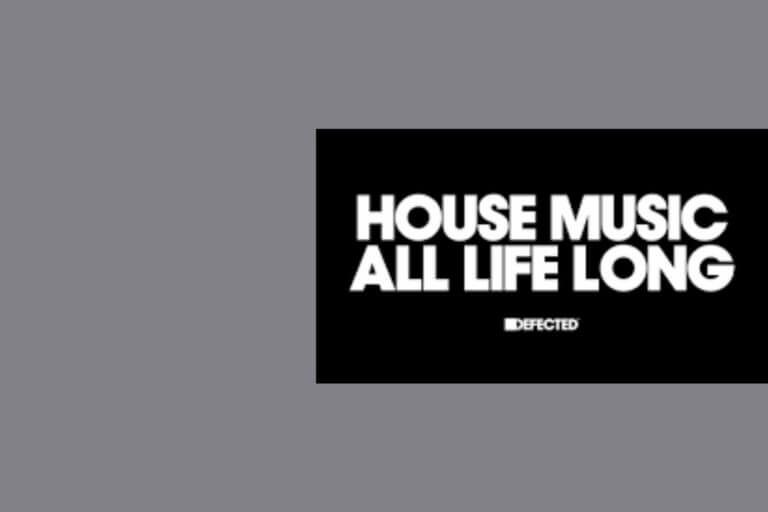When it comes to being a DJ, it’s clear that they’re spoiled for choice. Whether it’s old-school hip-hop or new-age commercial EDM, DJs can play with just about anything. One of the most essential genres for any DJ to consider learning how to perform in is none other than House music.
House music is an incredibly popular and eclectic genre of music with a plethora of different branching sub-genres that a DJ can eventually find themselves specializing in.
Not only that but, because of its immense popularity, house music has some of the largest playlists available for DJs on platforms like Beatport, Bandcamp, Spotify, or SoundCloud.
By understanding the fundamentals behind mixing house music, you not only can perform with one of the most rewarding genres out there but you are given one of the largest playlist libraries as well.
So, if you’ve always wanted to make the jump into house music, and have an urge to become a House DJ, but have been thinking “how do I start mixing House music”, this could well be the perfect starting point for you.
Here, we’ll get into the structure of house music, basic DJ skills, harmonic mixing, and beatmatching.
We’ll also go over several other aspects of house music so that, by the end, you’ll be on your way to becoming an expert in the genre and able to do just about anything ‘House music’.
How Do I Start Mixing House Music?
House music is arguably one of the easiest genres of music to mix. This is because the music is made for DJs to mix with, and because the kick drums really do make it easy to hear when you have the mix dialed in., and whether it has strayed out as well. It is essential you also add to the basics by learning the fundamentals of House music. This includes understanding sub-genres, beat structure, phrasing, hot cues, signifiers, and mastering using your DJ gear.
Read this next: How To Start Mixing Techno Music? (DJing Techno Like Papa Sven)
Djing House Music: The Basics
Step #1. Understand The Different Sub-Genres
Normally, it may seem a bit silly to assume that the sub-genres would be radically different from the primary genre.
The reality, however, is that “House” music is extremely broad, it makes up a pretty expansive group of sub-genres, and isn’t one set sound.
As such, you must know what type of sound you’re trying to work on and develop before jumping into the genre as a whole.
House Sub-Genres
The number of sub-genres for house music is pretty expansive and includes the following (A-Z):
- Acid House
- Bass House
- Balaeric House
- Big Room House
- Chicago House
- Classic House
- Deep House
- Disco House
- Electro House
- Funky House
- Hard House
- Future House
- Jackin House
- Minimal House
- Old School House
- Progressive House
- Scouse House
- Tech House
- Tropical House
- Tribal House
As you can see, the amount of variety among these various option styles is quite extensive and pretty much extend well past what house music is in and of itself.
You will also find that some of these genres yo-yo in and out of popularity.
Some years you will hear a lot of DJs and venues playing a particular sub-genre of house, then all of a sudden that genre will fall out of favor and become obsolete for a period of time.
A perfect example of this would be Hard house.
Determining Your Sub-Genre Style
Discovering what sub-genre is best for you, and which one properly suits your style and musical passion, is incredibly important if you want to jump into the House music brand.
You’ll best be able to determine what style works best for you by focusing on a track’s BPM.
For example, Deep House music generally has a BPM that sits between 115 and 140. It’s also generally a much more relaxed type of music when compared to say, Hard House, which hammers away at anything above 150 BPM+.
Mixing Complementary Sub-Genres
Just because you should understand what sub-genre works best for you doesn’t mean that you can’t play with and combine others into the mix. The only thing you’ll want to keep in mind is that any additional house sub-genre should ideally complement the primary sub-genre.
Outside of that, you can go full-boar on just about anything you want.
Getting Familiar With Other House Sub-Genres
Just as well, you also want to become as familiar as possible when it comes to several other House music styles. This not only ensures you know have picked the right sub-genre to focus on but can also properly determine when to add other styles into the fold.
Being limited to just a single genre could well restrict your career options.
As an example, if you were planning a show, you may want to start things off with a more soulful Deep House beat, while later, in a club or bar, you’ll instead opt for a more Tribal House.

Step #2. Understanding House Music’s Beat Structure
Next, you’ll want to better get a grasp on House Music’s beat structure.
And while this may seem a bit daunting at first, it’s a time of celebration. In reality, not only is House music incredibly easy to mix compared to other genres, but the reason for this is that it’s a music genre created for DJs by DJs.
House music follows a typical 4/4 format for each music beat, offering a hard and robust kicking drum sound at its end.
Meanwhile, for every other beat, there is a snappy snare beat or a clapping sound.
There can also be an offbeat cymbal or hi-hat sound that comes along based on the nature of the song.
By understanding this, you should be able to easily stay on top of the beat while also being able to easily mix and match based on its overall structure. Still, despite knowing this, several other aspects go into mixing house music outside of its beat structure.
Step #3. Understanding Its Phrasing Beats
The next element to come with mastering House music is phrasing.
A track’s phrase is generally composed of several bars of a beat. Every phrase makes up its separate discrete section of a track. As an example, a song’s verse, chorus, buildup, and breakdown are all separate phrases.
At the end of a particular phrase, there’s generally some type of embellishment of some kind that lets the audience or listener know the next phrase is coming. This normally is exhibited through a drum fill sound.
These embellishments are used to help smooth out a transition from an old sound to a new one.
This makes them the perfect point in a track to add a new beat while not having it sound too jarring to the audience. As such, it’s ideal that you make sync phrasing a good part of your practice.
Step #4. Using The Different Hot Cues
Next up are the hot cues.
These cues are the things you’ll be using to mark out the different phrases that you plan to use throughout your tracks in your DJ software.
They not only work to split a phrase into several distinct sections, all of which are visible, but they also allow you to cycle out to the start of a phrase simply by pushing a button.
I can tell you that, when it comes to mixing music, having this one-button hot cue feature is insanely useful.
Different Hot Cue Locations
It’s important to know that, depending on the device you’re using, the hot cue setup may be entirely different.
For example, while laptops will often have the hot cues set on your DJ software, CDJs and DJ controllers will allow you to set your hot cues up directly on the hardware itself.

Step #5. Understanding & Using The Signifiers
One thing you’ll notice, when playing with house music, is that not every single label placed on a track’s waveform needs to be regarded as being a hot cue.
Labels can be so much more than that. For example, one of the other options is what’s known as general prompt signifiers.
These signifiers work by identifying certain sections of a track that can blend well with specific phrases of the alternative main track.
As an example, if there were a part of “Track B” that would blend well with a specific phrase in “Track A”, you could use the prompt signifiers to label both of those sections as “little B”. From there, when blending, you could align all of the “little B” sections together, merging them into one unified blend.
This method is far and away better than just listening by ear and trying your best to connect the sounds, leading to a lot fewer errors or chances for a track’s vibe or flow to get ruined.
Step #6. Mixing House in Key (Harmonic mixing)
Harmonic mixing is a great way to put out some truly spectacular sounds.
By harmonic mixing, you take two separate tracks and mix them along with their keynotes, matching them with either the same note or a note that acts as a compliment.
Whereas it can theoretically be done by ear, harmonic mixing is primarily performed via digital machinery. This comes in the form of either a controller, DJ software, or the use of a CDJ.
Read this next: How Mixing In Key Can Seriously Improve Your DJ Game

Read this next: How Do You Mix Disco Music (A Funkadelic Guide)
Mixing House Music: The Gear
The good thing about House music is that, unlike some other genres that may need a bit more to make them stand out, it doesn’t need anything particularly special or different from your standard hardware or software, especially when looking to get started.
Still, there are a few things you’ll want to consider making a point of getting before setting up your first DJ House set.
#1. DJ Controller or CDJ & Mixer Set
The fact of the matter is that, if you want to perform, you’re going to need to carry some type of way of performing.
Now, you can be silly and try for an old-school set of turntables and a ton of bulky vinyl records, but that’s not reasonable.
In reality, you’re going to want to invest in a good set of current DJ gear. That’s either going to be a reasonably well-made DJ controller or a solid pair of CDJs combined with a mixer.
Read this next: The 15 Best DJ Controllers on the Market
DJ Controllers
DJ controllers act as basically a complete “all-in-one” DJ setup device. It comes already with an integrated mixer along with two jog wheels and an assortment of different buttons and effect features.
Generally, a DJ controller must be connected to a laptop computer for it to properly function.
There, it works alongside whatever DJ software you’ve installed to read track information along with every other vital part of a DJ’s performance.
The one exception to this is if the controller has an LCD or USB support option. In this case, the controller doesn’t need to be paired with a laptop and can function entirely on its own.
These are known as standalone controllers.
Read this next: 5 Best Standalone DJ Controller Picks
CDJ & Mixers
On the other hand, CDJs are not all-in-one setups. Instead, these devices are a single jogwheel and only a single jogwheel.
That means, unlike the controller, you’re going to need to buy an entirely separate jogwheel. And that’s not all.
You’re also going to need to buy an additional mixer.
This can certainly make the DJ controller seem like the better option, primarily due to the cost disparity.
In exchange for this hefty price difference, the CDJ setup will often have a higher quality sound while also not needing a laptop to play – thanks to the included screens and USB port support.
Read this next: Best DJ Mixer Picks
#2. Quality Monitor Speakers
The next thing you’ll want to invest in is a solid pair of monitor speakers. These days it is easy to pick up a good quality pair of monitor speakers at a very affordable price. DJs are spoiled for choice when it comes to speakers in this day and age.
Read this next: Best DJ Speakers: Our Top Picks
#3. Invest in DJ Headphones
You’ll ideally want to find a good set of DJ headphones, which offers several fun perks when compared to standard headphones. Do not settle for a normal pair of cans. Again, DJs are spoilt for choice when it comes to affordable, but excellent, DJ options.
Read this next: 12 Best DJ Headphones: Our Top Picks
#4. DJ Software
Lastly, you’ll need to have a quality level of DJ software to invest in. This is especially true if you are using a DJ controller for most of your other options. Some of the better options include Serato DJ Pro, Traktor DJ Pro, and Virtual DJ.
Read this next: 8 Best DJ Software Options

Read this next: Essential DJing Transitions (Made Simple!)
How Do I Start Mixing House Music? Takeaway
We finish with our “how do I start mixing house music” takeaway.
When it comes to being a solid House music DJ and knowing how to best present House music, the fact of the matter is that there is a reason so many people love it, especially crowds and other DJs.
By really getting to understanding how to DJ House music and its many components you open yourself up to a small treasure trove of different options and availability.
Take the time to understand what makes house music as beloved as it is.
That way, when you’re ready to perform, you can put out some truly masterful pieces of sound together during your next DJ set.




